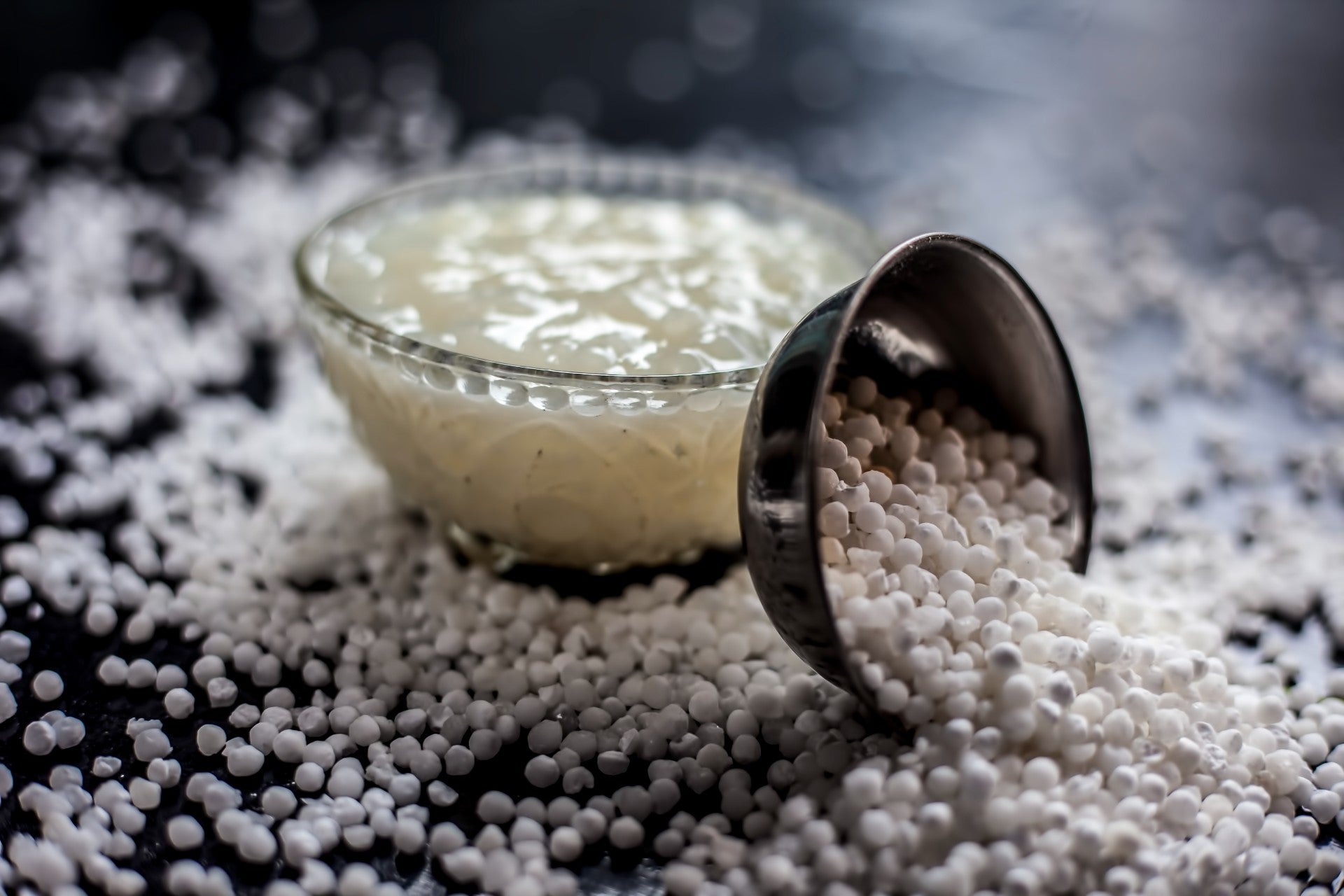Ingredients
To make the pearls:
Tapioca starch
½ cup
Brown sugar
½ cup
Water
¼ cup
To cook the pearls:
Water
8 ¼ cups
Brown sugar
⅓ cup
Preparation
Add the water to a pan and bring to a rolling boil. Add the sugar and keep boiling until the sugar has fully dissolved in the liquid.
Remove from the heat, add just under half of the tapioca flour and mix in thoroughly, then add the rest of the tapioca and mix again. Try to do this as quickly as possible, as this helps the dough to form. You may wish to wear protective gloves to avoid splashing yourself with hot water.
The mixture should form a dough, but this can take a few adjustments to achieve, as different brands of tapioca flour have different consistencies. If you are unable to form a dough, add more tapioca flour, 1 tsp at a time, stirring well each time until you reach the desired consistency. Likewise, if the mixture is too dry, add 1 tsp of water and mix well.
Once you have your dough, leave it to sit for a while until it’s cool enough to touch, then sprinkle some tapioca flour onto a clean surface, knead the dough and roll it out to about ½ inch thick.
Take a sharp knife and cut the dough into ½ inch by ½ inch squares, rolling each square between the palms of your hands until it forms a ball, then rolling it in some more tapioca flour to prevent it from sticking to the others.
At this point, you can either store the balls in an airtight container in the refrigerator until you need them, or, if you’re using them right away, continue to the next step and cook them to that perfect, chewy ‘Q’ consistency.
To cook, add the dry tapioca balls to a pan and cover with 8 cups of the water, reserving ¼ cup for later. Cook on a medium-high heat for 6-8 minutes, then reduce the heat to low and cook for a further 5-10 minutes, depending on how firm you like your pearls.
While you are waiting for the pearls to cook, place the sugar and the rest of the water in another pan and bring to the boil, cooking for around 5 minutes.
Keep checking both pans, and when the tapioca balls start rising to the top of the water, remove them and place them in an ice bath for 1 minute.
When the sugar syrup is ready, it should be slightly thickened but still runny, so it coats the spatula without immediately running off. Once you have the right consistency, reduce the heat to low, remove the pearls from their ice bath and add to the sugar syrup, leaving them to cook for 6-8 minutes.
When the pearls are ready, remove them from the mixture. If you’re serving them with hot ingredients, you can serve right away, otherwise leave them for 10-15 minutes to cool.
If you want to find out more about boba tea, including its history, and some of the more popular styles and toppings, take a look at our ultimate guide to boba tea.












